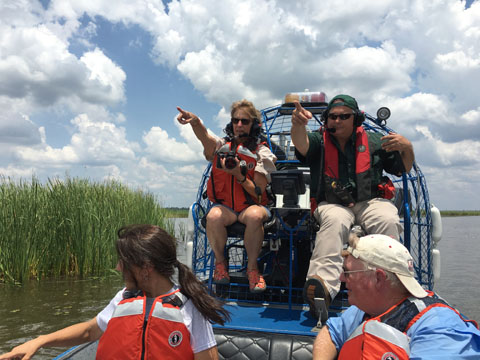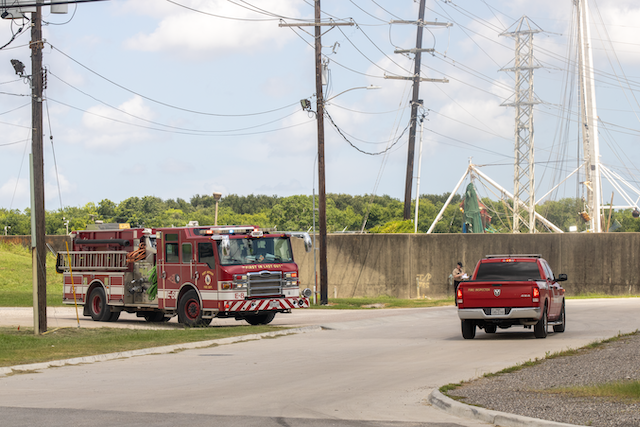LU field study shows eco-cooperation
Published 10:20 am Saturday, July 23, 2016

- (clockwise from top left) Jennie Knapp, a teacher and instructor, and J.T. Ewing from the General Land Office point out an alligator to James Westgate, professor and TES director, and Susie Tipton, teacher. (Brian Sattler)
Lamar University’s Department of Earth and Space Sciences completed their 21st annual Teaching Environmental Sciences in the Three Rivers’ Watershed summer institute (TES Institute) on the Neches River this Friday as its class members learned firsthand about oil spill prevention and response in local coastal waters.
“This is the final day of a 10-day field institute for our teachers,” said James Westgate, PhD, Professor of Lamar’s Department of Earth and Space Sciences and director of the TES Institute. “The course is basic science with the theme of Southeast Texas and how organizations, government groups, and non-profits come together to improve the marine environment in the area.”
It is a unique two-week course that introduces its students — really teachers from all across the Southeast Texas area and students prepping to become teachers — to local environmental issues that affect them and local businesses directly.
Trending
“It’s striking a balance between the environmental side and the business side,” the director of public relations for Lamar University, Brian Sattler, said. “It asks what can business do to help the environment. How does industry affect the environmental process?”
Westgate cited the first Clean Air Act passed in the 1970s as an example of a shift in political and cultural paradigms where government, business, and people came together to look at and fix problems that had been plaguing the ecosystem.
“The environment of the Neches River had been a miserable place back then. There were only four species of fish able to live in it,” Westgate said. “Because there were no rules of dumping waste in the water way.
“But then after the following acts in the 1970s, the [Neches] River came back alive and the ozone had to meet federal standards.”
Westgate lauded how “the industries came together to fight” on air quality’s behalf, but also for the wetlands and the wildlife that lived there.
“We have a saying,” spoke Westgate on the impact of pollution on the local environment and subsequent economy: “‘No wetlands; no seafood,’”
Trending
Very simply, if the area where fishermen get their fish is spoiled or devoid of edible fish, then there’s going to be no fish to eat at the local restaurant.
“The Neches River is a nursery for different species of fish and wildlife,” Sattler said. “Between government oversight and a great deal of cooperation with industries, we do what we can to make Southeast Texas clean.”
Crucial to that goal are its students, who are either teachers or students studying to become teachers, and most of them are either already science instructors of some type or just plain interested in scientific endeavors.
“What better way to learn about the environment and my new home?” asked Raul Diaz, second-grade teacher at Washington Elementary School in Port Arthur, who is from Venezuela.
When asked what his favorite aspect of the 10-day field institute was, Diaz answered clearly: “The nature. I would love to know just how pristine the environment is.”
Diaz’ wishes for his own students in future classes would be to plan field trips to see the outdoor wilderness for themselves, gain a respect for their environment, recycle and reduce, and hope that whatever they do in life, they stay environmentally conscious.
And, given the eco-friendly theme of TES, that would be a lesson well worth its future generations of students and teachers.





